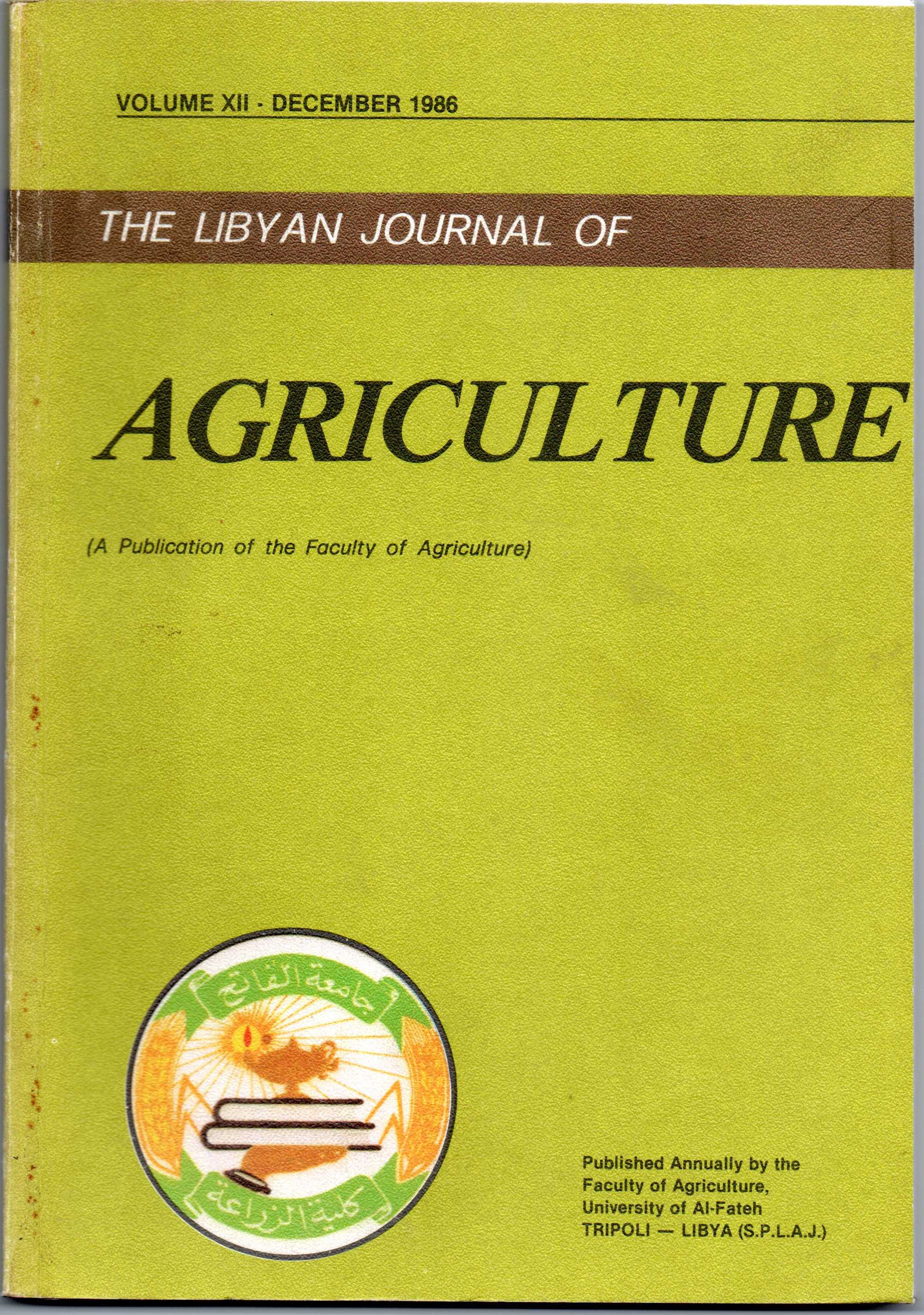Nematode destroying fungi in Libyan Jamahiriya soil. A. Isolation of Catenaria anguillulae, an endoparasitic fungus on Rhabditis spp
Main Article Content
Abstract
Nematode destroying fungi are endoparasites without an extensive hyphal development outside the body of their host (1). In most species only evacuation tubes are produced externally. Eventually the endoparasitic spores are either ingested by the host or adhere to its cuticle. Comparatively few detailed studies have been made on endozoic fungal parasites of soil nematodes (1, 2). In Libyan Jamahiriya soil, the first work has been done by Giuma and Cooke (4). This work was carried out to verify the presence of this group of fungi in Libya.
Nematodes were isolated from a grove soil at Ain Zara, Tripoli in spring, 1984. An unidentified Rhabditis spp., infected with an endoparasitic fungus was isolated as described by Giuma and Cooke (4). Diagnostic characteristics of this isolated fungus closely fitted those described by Sorokin (1976); Cooke and Godfery (3) and Barron (2).

